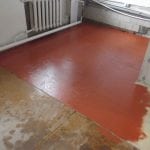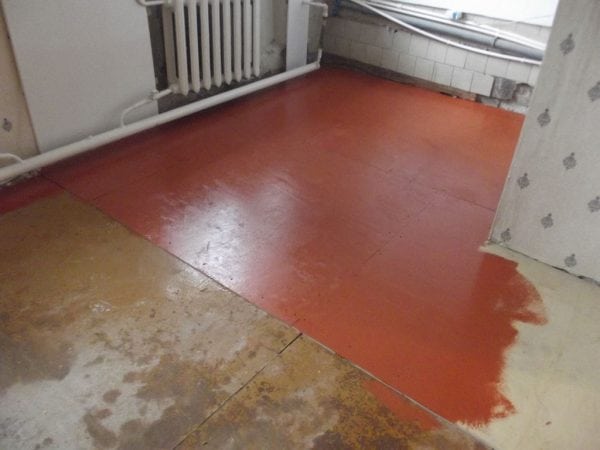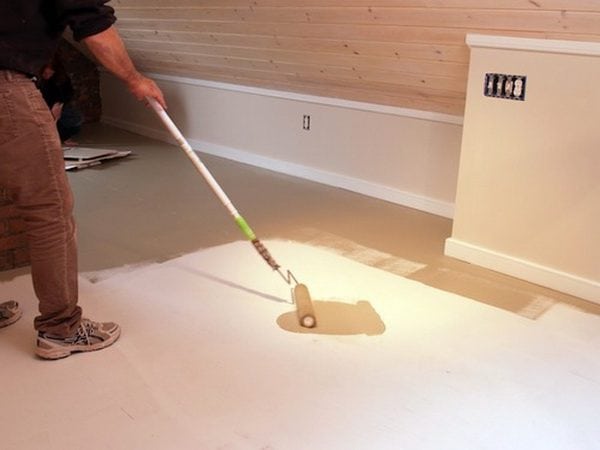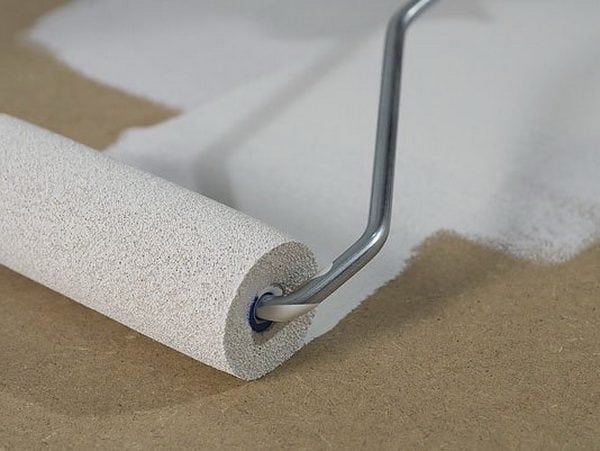Wood-fiber plastic (fiberboard, hardboard) is a strong and durable material used not only in construction and repair work, but even for decorative purposes. At the same time, the dry utilitarian nature of fiberboard requires that the final surface be decorated in some way.
- Features of the coloring of the material
- Preparatory work
- Hardboard staining sequence
- Single moments

This can be done by pasting the fiberboard with wallpaper or an opaque film, or you can paint the front surface of the plastic. Facial because it will take a lot longer to fiddle with the opposite side - it is smooth, and therefore practically does not hold any paint.
to contents ↑Features of the coloring of the material
The technology for producing fiberboard determines its porous structure. According to this indicator, hardboard is much superior to wood. Therefore, you will have to come to terms with the fact that the consumption of any paintwork composition that has the intention to paint the fiberboard will be much larger.
For example, if on a can of paint the manufacturer indicates its estimated consumption per 1 m2 of the surface to be painted, then it is worth remembering that these figures are for low-porosity substances. For fiberboard, this norm will have to be increased by 2.5-3 times.
Painting technology also largely depends on what we are going to paint. Some compositions will be optimal for the floor, and others for the walls or pieces of furniture.
The paint consumption can be slightly reduced if you pre-treat the painted surface with coarse sandpaper. The dust from the abradable fibers is clogged into the pores, and thus does not allow the paint to penetrate too deep into the structure of the hardboard.
to contents ↑Preparatory work
The preparation is as follows:
- Sanding the surface for painting. In addition to eliminating pores, grinding will make the initial roughness of the material more uniform, which will not only facilitate the staining process itself, but also increase the visual perception of the finished result.
- Putty joints. It is performed if it is necessary to paint several connected sheets of fiberboard. Putty is not suitable for any, but only one that is characterized by increased ductility, in particular acrylic. It will help to tightly fix the contact points of adjacent sheets and thereby facilitate their subsequent staining. Acrylic or silicone based sealants are also acceptable.
- Degreasing the surface with any organic solvent. The operation is performed so that traces of grinding, as well as excessive oiliness of the surface, do not impair the quality of its painting.
- Primer. It will reduce the consumption of basic paint; at the same time, those pores that could not be eliminated as a result of grinding overlap. The primer should be heated to 40-60 ° C before use. The viscosity of the primer (most commonly used is a common drying oil, although alkyd primers are suitable), while decreasing, and its fluidity is increasing. The primer is applied in one coat.
As a working tool for painting hardboard, hard brushes and rollers on a natural (not foam) basis are suitable. Other options are unsuitable, because they will not be able to hide the fibrousness of the original surface, and traces of paint layers will be very noticeable.
to contents ↑Good results are obtained by painting the fiberboard with a spray gun or spray gun, but the costs with this method of staining will increase. Mechanized dyeing pays off only with significant processing areas.
Hardboard staining sequence
The choice of paint for painting fiberboard does not matter. More important, rather, where the painted fiberboard will be located. If it is on the floor, then paint with increased wear resistance is suitable - alkyd, acrylic, oil (the latter, however, dries longer). For walls, it is perfectly acceptable to use a water-based paint.
Sometimes, after staining, the finished surface with decorative purposes is varnished. This does not give a special effect for fiberboard, but if there is a desire to give the surface a more presentable appearance, as well as increase water resistance (this is advisable for furniture details), then the plastic can be coated with transparent varnish.
to contents ↑When using parquet varnish, it is possible to achieve greater stability of the fiberboard from sudden changes in the relative humidity of the air in the room.
Single moments
If the fiberboard is located on the floor, then varnishing of the finished surface should be performed not in one but in two layers.
Sometimes purely decorative coloring of plastic is used. Then, on the contrary, they try to emphasize its fibrous primary texture. To do this, staining is done with bitumen varnish with a small brush.
To achieve the smoothness effect of the fiberboard surface, it is painted in light or even white colors, and to achieve a dull surface, water-dispersion-based paints are used.






